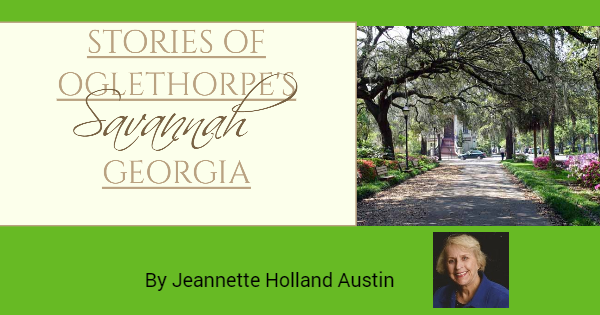
Biographical Sketches of Colonial Georgians by Jeannette Holland Austin
Noble Jones, very active in the Crown’s politics at Savannah, and owned a plantation in Savannah, near the mouth of the Vernon River, on an island called “Hope Island.” Nearby, he had his fort to prevent the poor people at Frederica from escaping to other places for bread. The son of Noble Wimberly Jones owned 1800 acres of land fifteen miles from Rocky Comfort, in St. George’s Parish, Burke Co. On the Isle of Hope, there were three plantations: Mr. Jones, Mr. Parker, and Mr. Fallowfield. Mr. Fallowfield’s house burned down in 1738.
NOBLE JONES was born in 1700 and embarked for Savannah on November 6, 1732, arriving on February 1, 1733. The Trustees at the Palace Court in London granted him Lot No. 41 in Savannah and made him Conservator of the Peace. In his letter to the Trustees in London, dated 1735, Savannah, he wrote:
“…as Ranger I do my constant endeavor to prevent any depredation being committed in any part of the province, particularly the cutting down Cypress and Love Oak trees, I have twice been to the southernmost parts of the province, the first time upon an alarm with about fifty men (all volunteers except the Scout boat), the pains of which voyage for fear, a first account should come to your hands, I will send by the next, the second time was with Capt. Dunbar who, I don’t doubt has informed you therefor befoe now. We have an account of some Yamassee indians (supposed to be the same that killed Tomochichi’s people), are now sculking about Ft. Argyle on that river.
In 1740, Noble Jones was one of the three settlers on the Isle of Hope, located at the mouth of the Vernon River. Mr. Parker and Mr. Fallowfield were the other two planters. Nearby was Jones’ Fort, with Noble Jones as commander to prevent the poor people of Frederica from escaping to different places where they could get bread. Jones was a fighter in the failed siege of St. Augustine, Florida, and afterward returned to Savannah appointed with a guard boat to observe the Narrows of Skidoway Island.
In August 1740, General Oglethorpe commissioned him as a Lieutenant and made him a Captain in 1743. In the Journal of William Stephens, dated February 15, 1741, Stephens related that Noble Jones came into town with his boat crew, leaving a guard behind him at the fort, to reveal that the Spanish Privateer, Van Ding, was cruising between Carolina and St. Augustine, and had overtaken two or three small trading vessels, fraughted with provisions from the northern province to the southern.
Sources: Candlers Colonial Records of Georgia; Colonial Georgians by Jeannette Holland Austin; Journal of William Stephes
In 1750, Noble Jones petitioned for 500 acres on the Little Ogeechee River, already having a lease for land on the Island of Hope, but never had owned any land of his own. In November 1750, he was appointed Assistant to the Board of Governor’s Council. In 1768, he was a Member of the Georgia Council and Conservator of the Peace. And in October of 1771, he petitioned the Trustees that he had some time ago purchased a plantation from Inigo Jones of the Island of Skidoway and that he had reason to believe that there might be a considerable quantity of surplus land within the line of said survey (500 acres granted in December).
Noble Jones was granted 800 acres on the north side of the Ogeechee River in February 1772. He died in Savannah in 1777.

Colonial Georgians by Jeannette Holland Austin. Members of GeorgiaPioneers.com may click on the links below to read bibliographies of the First Settlers to Georgia
| PREFACE | HISTORY | Plantations | The Scotch Club |